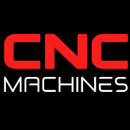Mastering CNC Programming: Tips and Best Practices for Beginners

Understanding CNC Programming: Tips and Best Practices
CNC (Computer Numerical Control) programming is the backbone of modern manufacturing, allowing machines to perform precise machining operations based on coded instructions. For beginners entering the field, understanding the basics of CNC programming, particularly G-code, is essential. This guide provides insights into CNC programming techniques, essential tips for beginners, and best practices for optimizing machining operations.
What is CNC Programming?
CNC programming involves writing instructions that dictate how a CNC machine operates, including movements, speeds, and tool changes. These instructions are typically written in a language called G-code, which communicates directly with the CNC machine's controller.
G-Code Basics
What is G-Code?
G-code is a programming language used to control CNC machines. It consists of a series of commands that tell the machine how to move, how fast to move, and what actions to perform. Each command is identified by a letter (typically 'G') followed by a number.
Common G-Code Commands
- G0: Rapid positioning – Moves the machine to a specified position at the maximum speed.
- G1: Linear interpolation – Moves the machine in a straight line to a specified position at a set feed rate.
- G2: Circular interpolation clockwise – Moves the machine in a circular path clockwise to a specified position.
- G3: Circular interpolation counterclockwise – Moves the machine in a circular path counterclockwise to a specified position.
- G90: Absolute programming – Positions are defined based on a fixed coordinate system.
- G91: Incremental programming – Positions are defined based on the current position.
Programming Techniques
1. Understand the Machine's Coordinate System
Before programming, familiarize yourself with the CNC machine's coordinate system, including the X, Y, and Z axes. This understanding is crucial for accurately defining tool paths and part locations.
2. Start with Simple Programs
As a beginner, it's best to start with simple CNC programs that incorporate basic commands. Gradually increase complexity as you gain confidence and understanding.
G21 ; Set units to millimeters
G90 ; Use absolute positioning
G0 Z5 ; Move the tool to a safe height
G0 X0 Y0 ; Rapid move to the starting point
G1 Z-2 F100 ; Move down into the material at a feed rate of 100 mm/min
G1 X50 Y0 F200 ; Cut along the X-axis to 50 mm at a feed rate of 200 mm/min
G1 Y50 ; Cut along the Y-axis to 50 mm
G1 X0 ; Cut back to the X-axis
G1 Y0 ; Return to the starting point
G0 Z5 ; Retract the tool to a safe height3. Utilize Comments
Incorporate comments into your G-code programs to document your thought process and the purpose of specific commands. This practice is especially helpful when revisiting programs after a time lapse.
G21 ; Set units to millimeters
G90 ; Use absolute positioning
G0 Z5 ; Move tool to a safe height
; Start cutting the part
G0 X0 Y0 ; Rapid move to the starting point4. Test Programs with Simulators
Before running a program on a CNC machine, use simulation software to visualize the tool paths and check for potential collisions or errors. This step can save time and reduce the risk of damaging the machine or workpiece.
Tips for Optimizing Machining Operations
1. Choose the Right Feed Rates and Speeds
Selecting the appropriate feed rates and spindle speeds is crucial for achieving optimal machining results. Consult tooling manufacturer recommendations and adjust settings based on the material and tooling being used.
2. Optimize Tool Paths
Minimize unnecessary movements in your programs to reduce cycle times. Optimize tool paths to ensure efficient material removal while maintaining quality.
3. Implement Tool Change Procedures
If your CNC machine uses multiple tools, plan and program efficient tool change procedures. This can streamline production and reduce downtime.
4. Maintain a Clean and Organized Work Environment
A clean workspace helps prevent accidents and ensures that tools and materials are easily accessible. Regularly clean your CNC machine and organize tools to enhance productivity.
5. Continuously Learn and Improve
Stay updated with the latest CNC programming techniques and technologies. Attend workshops, online courses, and industry conferences to continually enhance your skills and knowledge.
Conclusion
CNC programming is a critical skill in modern manufacturing, enabling precise control over machining operations. By understanding the basics of G-code, practicing effective programming techniques, and optimizing machining operations, beginners can set themselves up for success in the CNC machining industry.
Embracing continuous learning and improvement will not only enhance programming skills but also contribute to increased efficiency and productivity in CNC operations. Whether you're a novice or looking to refine your expertise, mastering CNC programming opens up opportunities for growth and innovation in manufacturing.


